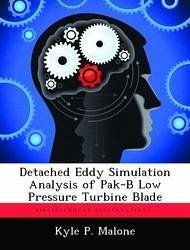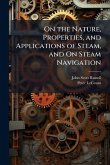Two cases were computationally investigated using the detached eddy simulation (DES) turbulence model: an unmodified Pak-B blade and a Pak-B blade with a dimple located at 65% of axial chord. Both cases were created so that they simulated an infinite span with an infinite number of dimples. The cases were run for an inlet Reynolds number of 25,000. The computed results were used to resolve the location of separation and reattachment, visualize the streamlines for the dimpled case, build velocity magnitude contour and vector plots, and map the thickness of the boundary layer. The results were then compared to previous computational and experimental studies in order to validate the detached eddy simulation model for future research into the effect of dimples on low pressure turbine flow fields. For the unmodified blade, the performance of the DES model compared favorably to other available viscous and turbulence models. For the dimpled blade, preliminary results also indicate favorable results although further development of the flow field is necessary to verify this. Based on these results, future researchers studying dimples on turbine blades should strongly consider using the DES turbulence model. This work has been selected by scholars as being culturally important, and is part of the knowledge base of civilization as we know it. This work was reproduced from the original artifact, and remains as true to the original work as possible. Therefore, you will see the original copyright references, library stamps (as most of these works have been housed in our most important libraries around the world), and other notations in the work. This work is in the public domain in the United States of America, and possibly other nations. Within the United States, you may freely copy and distribute this work, as no entity (individual or corporate) has a copyright on the body of the work. As a reproduction of a historical artifact, this work may contain missing or blurred pages, poor pictures, errant marks, etc. Scholars believe, and we concur, that this work is important enough to be preserved, reproduced, and made generally available to the public. We appreciate your support of the preservation process, and thank you for being an important part of keeping this knowledge alive and relevant.
Bitte wählen Sie Ihr Anliegen aus.
Rechnungen
Retourenschein anfordern
Bestellstatus
Storno








